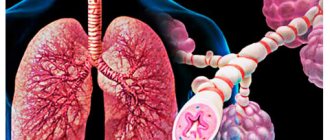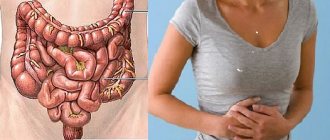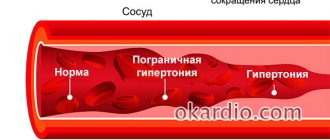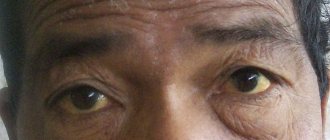Myocarditis is an inflammatory process that occurs in the lining of the heart muscle. Often the disease is rheumatic, infectious or allergic in nature. The disease occurs in both acute and chronic forms. The first is accompanied by shortness of breath, swelling in the lower extremities, enlarged veins in the neck and other symptoms. In the second, the signs are not so pronounced.
Often, infectious myocarditis develops after a sore throat, acute respiratory viral infection, diphtheria and other infections. In the absence of correct and timely treatment, complications and relapse may develop in adults and children.
This article will describe the symptoms of the disease in children and the older generation, the qualifications of the disease, its treatment and preventive methods. The reader will also receive information about the prognosis for myocarditis.
As you read, questions may arise - please address them via the online form to the portal specialists.
Consultations are provided free of charge around the clock.
What types of inflammation are possible in the muscle tissue of the heart?
Morphological and histological processes during myocardial inflammation can occur in three types:
- alternative - degeneration and death (necrosis) of myocytes;
- exudative - the first place comes to the formation of serous or fibrinous fluid (exudate), in which there are large quantities of formed blood elements (neutrophils in sepsis, histiocytic lymphocytes in rheumatism, eosinophils, lymphocytes and plasma cells in allergies);
- productive - join exudation, are expressed in the proliferation of certain groups of cells with the formation of typical granulomas (nodules), an example would be myocarditis in scarlet fever, rheumatism.
Muscle tissue is the parenchyma of the myocardium
Exudative inflammation often accompanies infectious and infectious-allergic processes. Moderate changes of an alternative and exudative nature after treatment disappear irrevocably and leave no traces behind.
In severe cases of the disease with severe intoxication, muscle fibers die. In their place, scar tissue grows. Such lesions can cover the entire myocardium.
Affected:
- or the parenchymal part of the heart tissue (myocytes with fibrils);
- or interstitial - connective tissue membranes in which the coronary and internal vessels pass.
Inflammation is classified according to its prevalence:
- focal - mild course with isolated accumulations of inflammatory elements, when located in the area of conducting pathways, they disrupt conductivity and can contribute to the activation of local automatism with extrasystole;
- diffuse - the myocardium is “studded” with small lesions, numerous scars disrupt the contractility of myofibrils, which threatens the development of heart failure.
In severe infections, inflammation can spread to other layers of the heart - the endocardium and pericardium.
Types and stages of development of myocarditis
The classification of the disease directly depends on the causes of its occurrence. In cardiology, the disease is divided into the following subtypes:
- infectious;
- infectious-toxic;
- infectious allergic myocarditis;
- allergic-toxic;
- idiopathic.
Myocarditis develops sequentially in four stages:
- toxic-infectious;
- immune;
- dystrophy;
- myocardial sclerosis.
The disease is also divided according to symptoms:
- low manifestation of signs of illness;
- pain syndrome;
- disruption of the blood supply to the heart muscle;
- arrhythmia;
- thrombus formation;
- pseudovalvular symptom;
- manifestation of symptoms in a complex.
The disease is distinguished by its prevalence, i.e. foci or diffuse course. It can occur in acute, subacute, chronic form. The degree of severity is not the least important in the classification of myocarditis. There are light, medium and severe forms.
Causes of myocardial inflammation
For reasons, myocarditis is divided into:
- infectious,
- non-infectious.
Viral inflammation of the myocardium: myofibrils are destroyed, accumulations of microorganisms are visible
Among infectious agents that can cause myocarditis, the first place in cardiotropism (heart damage) belongs to viruses:
- coxsackie - found in half of the victims;
- influenza - more often in older patients;
- ARVI;
- measles
Bacterial myocarditis takes second place in the frequency of lesions:
- hemolytic streptococcus - the causative agent of rheumatism;
- diphtheria bacillus;
- Mycobacterium tuberculosis;
- causative agents of typhoid and paratyphoid fever;
- scarlet fever:
- septic infections.
Pathological microorganisms are:
- rickettsia;
- mushrooms;
- spirochetes.
During the bacteriological study, the influence of two or more pathogens was noted, which share functions: one causes a general infection and blocks the body’s defenses, the other selectively affects the myocardium.
In acute tonsillitis, the cause of myocarditis can be a focal infection of the oral cavity (carious teeth), nasopharynx (chronic sinusitis, rhinitis).
The group of non-infectious myocarditis includes:
- allergic and infectious-allergic types of disease;
- toxic - occur when the myocardium is exposed to toxic substances.
As a manifestation of allergies, myocarditis occurs when there is an excessive immune response to an irritant. It may be a reaction to:
- medicine (the most dangerous are antibiotics, Novocaine, sulfonamides, catecholamines, Spironolactone, Amphetamine, Methyldopa);
- administered vaccine or serum;
- burn;
- a bite of an insect;
- tissue and organ transplantation.
A rare type of inflammatory reaction is eosinophilic myocarditis. Infiltration occurs:
- against the background of skin diseases (dermatitis);
- for bronchial asthma;
- after abrupt withdrawal of corticosteroids in the treatment of various diseases.
Toxic lesions are typical for:
- poisoning;
- renal and liver failure;
- alcoholism;
- excess thyroid hormones;
- drug overdose due to inadequate treatment.
Features of rheumatic myocarditis
Rheumatic myocarditis stands apart among all myocardial inflammations. Although caused by infection, an autoimmune response has been proven to play a role.
It has characteristic differences from other types:
- almost always accompanied by endocarditis with damage to the heart valves;
- associated with a primary streptococcal infection, symptoms appear after a latent period 2 weeks after a sore throat, acute nephritis;
- most often affects children and adolescents;
- the morphological substrate is specific granulomas (Ashof-Talalaev nodules);
- the location of granulomas is most often found in the posterior wall of the left atrium and in the papillary muscle of the left ventricle;
- accompanied by damage to other organs and tissues (joints, nervous system);
- has a chronic course.
Idiopathic Abramov-Fiedler myocarditis etiology remains unclear. It has a very severe acute course. Rapid development of decompensation with pronounced expansion of the cavities of the heart. The patient dies from heart failure or rhythm disturbances.
Infectious-allergic form of the disease
Infectious allergic myocarditis is most often diagnosed in children and able-bodied individuals under 40 years of age. Many cardiologists believe that the idiopathic form of myocarditis according to Abramov-Fidper is highly dangerous. This is due to the fact that this type occurs not only in connective tissues, but also in the lining of the heart organ.
Infectious allergic myocarditis has the following symptoms:
- general malaise of the body;
- pain in muscles and joints;
- dull, aching and squeezing pain in the chest cavity;
- dyspnea;
- cardiopalmus.
Myocarditis also has variable symptoms, which manifest themselves in arrhythmia, bracardia, hypotension, conduction failure and other symptoms.
There are no symptoms of heart failure in this type of myocarditis.
On average, in a third of patients, the disease is asymptomatic or has mild symptoms. The disease can only be diagnosed using modern medical equipment.
Symptoms
Symptoms of myocarditis are universal, since myocardial damage, regardless of the cause, equally affects contractile function, conductivity and excitability.
Read more about the properties of the heart muscle in this article.
Most often patients complain of:
- weakness;
- shortness of breath and palpitations during physical exertion;
- sensation of arrhythmia, strong heartbeats during extrasystoles;
- pain in the heart of an aching, dull nature, not associated with exertion and not having the nature of attacks;
- prolonged low temperature;
- increased sweating.
Bradycardia (more often with diphtheria, influenza) is an unfavorable symptom. Indicates damage to the sinus node or a sharp violation of atrioventricular conduction.
Severe weakness makes a person lie down more
Rarely, “flying” intermittent pain in large joints is possible.
Severe course is accompanied by:
- attacks of suffocation;
- dizziness;
- bluishness of the face.
In myocarditis, the right ventricle is the first to suffer because its muscle is weaker and thinner.
Upon examination, the doctor discovers:
- expanded boundaries of relative cardiac dullness;
- swelling of the veins in the neck;
- systolic murmur on auscultation;
- arrhythmia of the pulse, its weak filling.
The addition of left ventricular failure is accompanied by moist rales in the lungs, swelling in the legs, and accumulation of fluid in the pleural cavity.
The course of the disease is most often acute and subacute. Rheumatic myocarditis involves a chronic process with “attacks” during exacerbation and remissions.
Chronic myocarditis - the main forms and causes of the disease
Myocarditis is a serious heart disease in which damage to the heart muscle occurs, predominantly of an inflammatory nature, caused by the impact of infectious diseases on the immune mechanisms in the human body. Although myocarditis is most often considered an acute disease, the possibility of chronic myocarditis has also been established.
Causes of chronic myocarditis
Although myocarditis can most often be an acute illness, there are reasons why the disease can become chronic.
Most often, this disease can occur due to various infectious diseases, but recently a new cause for the manifestation of this disease has been observed - viral infections.
Non-infectious factors that can cause the manifestation of myocarditis include the use of various medications, antibiotics, methyldopa, medicinal serums, and vaccines.
The main causes of inflammatory chronic myocarditis are inflammation of various diseases.
Such diseases also include rheumatism, for the treatment of which many different medications and medications are used.
This disease and medications complement each other, which ultimately causes the manifestation of a new disease, which is called chronic myocarditis.
Also, the main reasons for the development of this disease include the following:
- Rheumatic causes;
- Infectious diseases (as a rule, in this case, the cause can be any viral disease, including influenza, measles, smallpox, rubella, diphtheria, pneumonia, and so on);
- An allergic factor is a manifestation of an allergic reaction to various medications and medications;
- Systemic diseases such as diseases of systemic tissues, various types of injuries, including burns;
- Idiopathic chronic myocarditis (that is, a disease whose cause has not been determined).
How does chronic myocarditis manifest and what are its consequences?
Symptoms of chronic myocarditis can be very different, it all depends on the complexity of the disease. It all depends on how much a particular heart muscle is affected.
As a rule, the first manifestations of complications of myocarditis are a decrease in blood pressure, an increase in the size of the heart, as the heart muscle loses its properties and is significantly weakened, and insufficient blood circulation. All these symptoms will lead to headaches, loss of movement orientation, and lack of ability to perceive certain things normally.
Most often in patients, chronic myocarditis manifests itself precisely in arrhythmia (a sharp change in the heartbeat), pain in the heart, fatigue, increased sweating and shortness of breath when performing the most basic physical activity. All other factors listed above appear much less frequently.
Treatment and prevention of chronic myocarditis
To prevent this disease, a person is recommended to strengthen his own body and its immunity. That is, jogging in the fresh air is recommended, preferably in a pine forest, since pine has special enzymes that strengthen the cardiovascular system of the human body, diving in an ice hole, and so on. This disease is directly related to the cardiovascular system. That is why it is worth doing everything to strengthen it as much as possible.
Treatment of chronic myocarditis requires the use of various antibiotics and medications, depending on the form of the disease. Treatment of this disease at home is highly discouraged, since if treated incorrectly, complications are possible that will lead to even more dire consequences.
Source: https://MoeSerdtse.ru/xronicheskij-miokardit.html
Peculiarities of the clinic in childhood
You can also read: Minor changes in the myocardium
In children, myocarditis is often caused by ARVI viruses and childhood infections. Among the symptoms, pay attention to the following:
- child's refusal to eat;
- vomiting;
- cyanosis of lips and face;
- shortness of breath;
- poor sleep;
- fainting states.
Severe acute course can lead to the formation of a protrusion in the upper part of the chest due to increased heart beats on the non-ossified ribs (heart hump).
Features of the clinical picture and course of the disease in various infections
The manifestations of infectious inflammation of the myocardium are influenced by the strength of the pathogen, the state of the patient’s immunity, and individual compensatory capabilities.
With diphtheria, both the “working” muscles of the myocardium and the conduction pathways are affected. Toxins cause cell necrosis and hemorrhages under the endocardium. The clinic develops in the second week of the disease. The more pronounced the bradycardia, the deeper and more widespread the lesion. The myocardium “activates” the protective mechanism of automatism. At the same time, nerves and blood vessels are affected.
Typhus “selects” small vessels, including the coronary arteries, and begins as vasculitis with inflammation in the surrounding tissues. Primary disturbances in cerebral vascular tone and a sharp drop in blood pressure. Myocarditis occurs secondary.
Typhoid fever is rarely accompanied by myocarditis in the third week of the disease. The myocardium changes along the path of fatty degeneration and dystrophy. Classic symptoms occur after a decrease in temperature and are post-typhoid in nature.
With scarlet fever, the morphology of tissue changes has a different form: from fatty degeneration to the formation of specific granulomas. The transverse striation of myofibrils disappears. Clinically, it occurs in accordance with the general manifestations.
Influenza - heart damage occurs after a decrease in temperature and intoxication.
Some researchers believe that the flu can be equated to diphtheria myocarditis in terms of its effect on the heart.
Considering the tendency of influenza viruses to damage the heart with severe atherosclerosis of the coronary vessels in older people, it is recommended to adhere to longer bed rest in treatment.
During lobar pneumonia, focal inflammation develops against the background of impaired blood flow to the right ventricle, insufficient filling of the left ventricle and coronary vessels. The process in the lungs complicates the outflow and saturation of oxygen. Therefore, circulatory failure develops much faster.
Signs of myocarditis in children
The infectious type of myocarditis in pediatric cardiology is divided into two groups:
- congenital form of the disease;
- acquired.
The first group in children develops during childbirth, because a child is born with a pathologically enlarged heart. The first symptoms begin to linger for about six months and are as follows:
- pale skin;
- the child’s health is sluggish;
- fatigue;
- poor weight gain;
- tachycardia.
The acquired disease in children has several forms, which occur in different ways: acute, subacute and chronic. Before the age of three, children are more often diagnosed with viral, bacterial or fungal myocarditis. As an adult, the child may suffer from an infectious allergic type.
The acute form of the disease is the consequences of previous colds. If a child develops symptoms such as insomnia, night sickness, shortness of breath, bluish skin color, nausea, systematic loss of consciousness and cold hands and feet, it is recommended to urgently visit a cardiologist’s office.
If the disease is not treated in a timely manner, it takes on an advanced form. The consequences of this attitude to the child’s health are a “hump” on the heart, in which a bulge forms in the sternum, which is diagnosed with the naked eye.
The subacute and chronic type of the disease in children most often develops less noticeably, and the first symptoms may appear after several years. Lack of proper treatment - early disability, dysfunction of the pumping activity of the heart organ and disruption of blood circulation.
Due to the high danger for children and adults, cardiologists advise undergoing an annual preventive examination. This will allow us to identify the disease at an early stage and develop the correct treatment strategy.
Diagnostics
Diagnostically identifying inflammation of the heart muscle is difficult when the disease is latent. Patients often find it common to develop weakness after an infection.
When examining and interviewing a patient, the doctor should specifically ask about the symptoms of myocarditis. The above manifestations of heart failure clearly indicate a connection with heart disease, and the acute nature emphasizes the role of infection or other factors.
A blood test reveals:
- leukocytosis;
- shift the formula to the left;
- increase in ESR;
- significant increase in eosinophils.
Among the biochemical tests you should pay attention to:
- excess of the norm of gammaglobulins, immunoglobulins;
- the presence of C-reactive protein, seromucoid;
- growth of sialic acids and fibrinogen.
Bacteriological blood culture helps identify the pathogen.
If an allergy is suspected, an antibody titer test is prescribed.
X-rays can reveal expansion of the cavities of the heart and congestion in the lungs.
Atrioventricular block together with other signs can be considered a symptom of myocarditis; after treatment, conduction is restored
ECG signs include various conduction disturbances (blockades), acute rhythm changes, and ventricular overload.
Ultrasound confirms a violation of the contractile function of the myocardium and accurately indicates a change in the size of cavities and valves.
Rarely, in severe cases with unclear reasons, they resort to a biopsy of heart tissue.
Exodus
Death occurs with severe cardiac arrhythmia. If heart failure develops, the outcome will depend on treatment. In most cases, heart failure can be fatal.
If the liver becomes enlarged, serious consequences can develop. Focal myocardial damage is characterized by more favorable outcomes. But, if the underlying disease is not cured, the disease becomes severe.
At a young age, the disease is easier to cure. Especially if the patient is determined to do so. Adjusts lifestyle, follows doctor's recommendations. This allows for success in treatment and leads to recovery.
go to top
Treatment of myocarditis
When treating myocardial inflammation, drugs are prescribed that can kill or sharply weaken infectious agents. At the same time, complications such as arrhythmias and heart failure are treated (prevented).
Bed rest will be required for a period of one week to one and a half months.
A patient in a hospital is prescribed oxygen inhalation.
The diet limits table salt, liquids, and spicy foods.
For anti-inflammatory purposes the following is used:
- antibiotics;
- corticosteroids;
- non-steroidal drugs;
- salicylates.
For viral etiology:
- antiviral agents;
- immunomodulators to stimulate self-defense.
According to indications, you may need:
- cardiac glycosides;
- antiarrhythmic drugs;
- coronary agents to dilate coronary vessels;
- vitamins;
- agents that support metabolism in myocardial cells (Panangin, Mildronate).
For the treatment of autoimmune and allergic processes the following is used:
- antihistamines;
- large doses of corticosteroids;
- immunosuppressants that suppress excessive reactions.
For idiopathic myocarditis, cure is possible only by transplanting a donor's heart.
Vaccination against influenza is carried out with the Russian vaccine "Grippol"
Prevention
Myocarditis of infectious origin can be prevented by general hardening procedures that increase immunity. To exclude severe infections, vaccinations are carried out from childhood.
Before suspected influenza outbreaks, it is important to get vaccinated, especially for older people.
People with allergies should avoid the use of vaccines, serums, and unclear medications, and stick to known and proven foods in their diet.
You should not suffer infections “on your feet” or interrupt bed rest. It is necessary to pay attention to the appearance of cardiac symptoms against the background of general recovery.
The inflammatory process in the myocardium causes scar tissue changes in the absence or improper therapy. Subsequently, it will manifest itself as cardiosclerosis, dystrophy and early heart failure. Therefore, it is so important to undergo timely treatment.
Complications
To understand the seriousness of the problem, it is worth considering possible pathologies that develop against the background of myocarditis.
Cardiosclerosis is the proliferation of connective tissue in the myocardium. It provokes deformation and disruption of the valves, significantly impairs the contractility of the heart and its conductivity.
Chronic heart failure - the heart muscle cannot pump blood in the required volume, as a result of which all organs and tissues without exception experience oxygen starvation and a lack of nutrients. CHF always leads to disability, and in severe cases to death.











